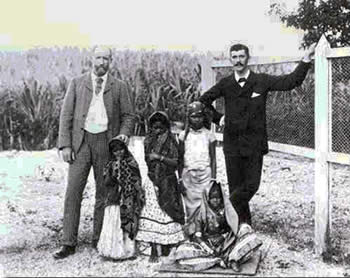 From the 1830s to the 1930s thousands of workers from Puerto Rico, the British and the Danish Virgin Islands come to work in Vieques, in the initially thriving sugar industry. By 1900 the four main sugar grinding mills are located at Arcadia, Santa Maria, Esperanza and Playa Grande.
From the 1830s to the 1930s thousands of workers from Puerto Rico, the British and the Danish Virgin Islands come to work in Vieques, in the initially thriving sugar industry. By 1900 the four main sugar grinding mills are located at Arcadia, Santa Maria, Esperanza and Playa Grande.In 1844 the town, Isabel Segunda (Queen of Spain) is officially founded and remains the capital of Vieques until today.
In the mid 1800's Count Mirasol, governor of Puerto Rico, realizes the construction of El Fortin Conde de Mirasol (The Fort). It is to be the last fort constructed on foreign soil by the Spanish Colonial Empire.
Starting in the last quarter of the 19th century numerous 'rebellions' and strikes (against atrocious 'working' conditions) in the sugar Haciendas on the one side and falling prices of sugar on the other, lead to an economic crisis by the 1930's. People leave Vieques by the hundreds to neighbouring St. Croix, St. Thomas and back to the 'big island', Puerto Rico. Families also sail to the sister island Culebra, where they find work at the military base, which was established in Culebra in 1901
When the Spanish American war is resolved in 1898 the land is turned over to the United States government with the promise that property titles given by the Spanish government would be honored. Titled land would not be confiscated by the Military Government established in Puerto Rico. These agreements are reached in the Paris treaty and by general order number 1 of the United States of Puerto Rico's Military Government. continue >>
